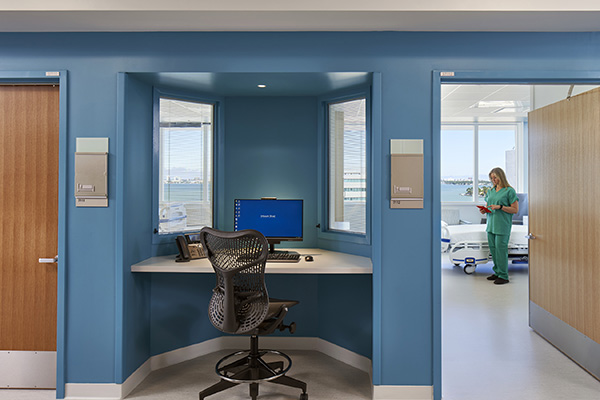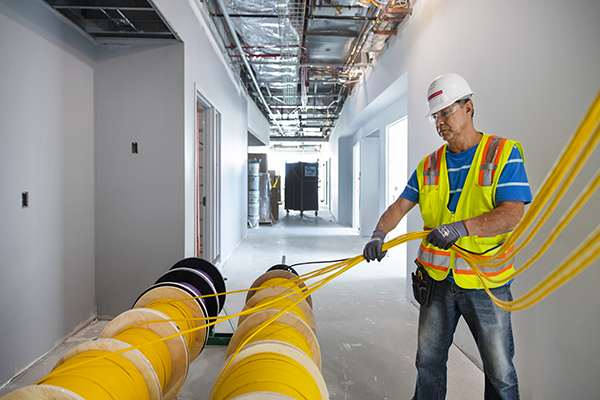Personalized, digital health advances are top-of-mind priorities among hospital chief information officers (CIOs), according to a report in Healthcare IT News. During a 2018 focus group organized by the not-for-profit healthcare organization the Scottsdale Institute, 80% of the gathered healthcare CIOs cited digital health expansion and its related patient experience improvements as their most important strategic initiatives.
What is behind the urgency expressed? Improving digital infrastructure is a critical step in responding to fundamental, unprecedented market force shifts in healthcare business, including:
- Consumers seek to “own” the management of their health and appreciate the convenience of self-service, app-based, 24/7 interactions with their health providers
- Providers grapple with implementing widespread mergers, acquisitions, and consolidations happening in nearly every health organization. These events require providers to invest time and dollars in creating interoperable, adaptable data and digital infrastructures
- Every stakeholder in the industry is discovering ways to innovate to address efficiency challenges as hospitals transition from a fee-for-service business model to value-based care
Next Era, Data-Ready Hospitals
Steve Culler, Low Voltage Resource Manager for Robins & Morton, has an everyday view into the urgency expressed by healthcare CIOs and hospital facilities directors.
“The technology infrastructure needs of our healthcare clients expand every day as the systems they rely on become more integrated and complex,” he explained. “In the past few years, every hospital has invested in a next-generation digital strategy to address ever-changing demands.”
 These systems, powered by low-voltage fiber optic and copper cabling infrastructure throughout the hospital, include critical, always-on networked technology for hospital security, door access control systems, nurse call systems, video surveillance, overhead paging, Wi-Fi distribution, dedicated radio communications, and patient information and entertainment systems.
These systems, powered by low-voltage fiber optic and copper cabling infrastructure throughout the hospital, include critical, always-on networked technology for hospital security, door access control systems, nurse call systems, video surveillance, overhead paging, Wi-Fi distribution, dedicated radio communications, and patient information and entertainment systems.
In the recently-opened, 340,000-square-foot Mt. Sinai Medical Center Bed Tower in Miami Beach, Florida, the low voltage infrastructure includes a structured cabling system with 165 miles of Ethernet cabling (CAT6A), 1,104 fiber optic connectors, and 44,000 feet of fiber. With a bustling surgical department of 12 operating rooms, 40 intensive care unit beds, and 114 general surgical beds in the building, the reliability of the building’s technology and its 19 different low-voltage systems was understandably a leading concern for administrators and staff.
Additional projects performed by the Robins & Morton low-voltage team include recent assignments for Nemours Children’s Hospital in Orlando, Southeast Georgia Health System in Brunswick, and Duke Raleigh Hospital in Raleigh, North Carolina.
Improving the Delivery Model, Managing Risk and Cost
Rick Guertin, Low Voltage Project Manager with Robins & Morton, oversaw the intricate infrastructure installations completed at Mount Sinai. He described why clients – and their construction managers – see the low-voltage work and its related network buildouts as a chronic problem and weak link in the overall building program. It was apparent to everybody, he explained, that the added complexity and scale of the work required a more strategic, accountable approach.
“The way these systems were built at the backend of a large project adds a lot of risk, cost, and uncertainty for owners,” Guertin said. “The quality of the work and the predictability of the schedule, just knowing what was going to happen and when was often dependent on the trade contractor of a trade contractor. Often, we saw multiple companies with each installing one specific system without a broader awareness of the overall program. So, you have multiple layers of contractors involved, layers of communication needed, and multiple layers of markup. On other projects, the installation and testing were provided by the hospital itself, usually through a contract that was separate from the construction management team.”
Steve Culler agreed with the challenges and lack of control issues, pointing out the deadline disruption caused on many of the projects he saw in the past.
“Adding to the problems Rick mentioned is the tendency to push this work out until the very end of construction,” Culler said. “When I was working as a low-voltage contractor, we were always brought in late, after the traditional construction trades were done and the walls painted. We would arrive on the site, and the first thought was ‘how are we going to pull cable through all this stuff.’ It still happens to this day.”
Finding a Better Way
To bring efficiency and the benefits of an integrated team approach, Culler began thinking about an alternative method.
“We thought if we provide this service ourselves and better coordinate and better integrate the planning, scheduling, and building of the systems into our construction process, it will deliver a much, much better product,” Culler said. “Also, since we are the contractor, we can maintain much better control of essential things such as safety on the job. We can be sure the people installing the work will be trained to our level of safety standards.”
 Around this same time, Robins & Morton was expanding its range of services directly performed by company employees, a practice known in the industry as self-performing. In 2015 after studying the needs of owners and reviewing ideas from field employees, the company decided to start a self-performed, low-voltage service intended to help solve the longstanding challenges seen by owners.
Around this same time, Robins & Morton was expanding its range of services directly performed by company employees, a practice known in the industry as self-performing. In 2015 after studying the needs of owners and reviewing ideas from field employees, the company decided to start a self-performed, low-voltage service intended to help solve the longstanding challenges seen by owners.
Since the 2015 launch, the adoption of digital technology in healthcare has accelerated beyond prediction. Health systems are investing in data and records management systems, online patient portals and apps, and online interaction experiences from telemedicine appointments to healthy menu planning.
“It is so dynamic,” Culler observed. “We are adding systems so hospital teams can track their equipment, their staff, and their patients, all of it done wirelessly. We have installed sophisticated distributed antenna system coverage for in-house cellular telephone users and for public safety emergency responders in surrounding municipalities.”
With these additions and system extensions, the budget implications come into play on each new project start. According to Taw North, Technology Director with TLC Engineering for Architecture and the design leader for the Mt. Sinai project, the information technology budget represented by the low voltage work is climbing to as much as 15% of the typical hospital project cost.
“This is a significant rise and requires a fiduciary partnership with the client to objectively review all options and transparently determine the best deployment of resources to achieve success.”
Imagining the Future
Low-voltage team members see the integration of several new applications coming into use.
“When you imagine the likely direction in healthcare building systems, the exciting opportunity is how we can integrate the multiple subsystems into one cohesive system where everything works together under an operating technology easily shared within the hospital and with outside partners,” said Rex Davidson, Senior Low Voltage Specialist with Robins & Morton. “Past practices, such as selecting and installing a standalone system, are no longer practical. Clients need to utilize each technology tool to its full potential and link one system with another to gain full advantage.”
When asked about the future of implications of digital research and product innovation, the low-voltage experts interviewed offered a thoughtful observation: it won’t be a long wait. The future is coming into view right now on today’s hospital projects. Pursuing the promise and benefits of integrated planning, design, and construction, they said, will allow building teams and their clients to stay a step ahead, ready to embrace tomorrow’s game-changing discoveries.

